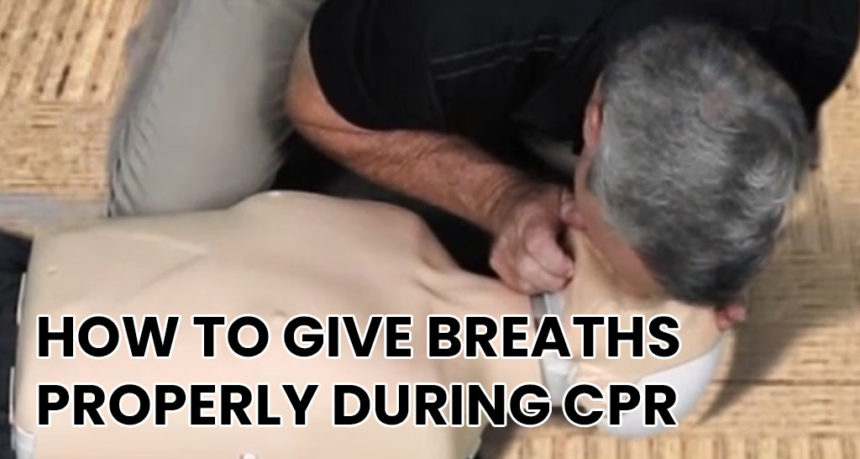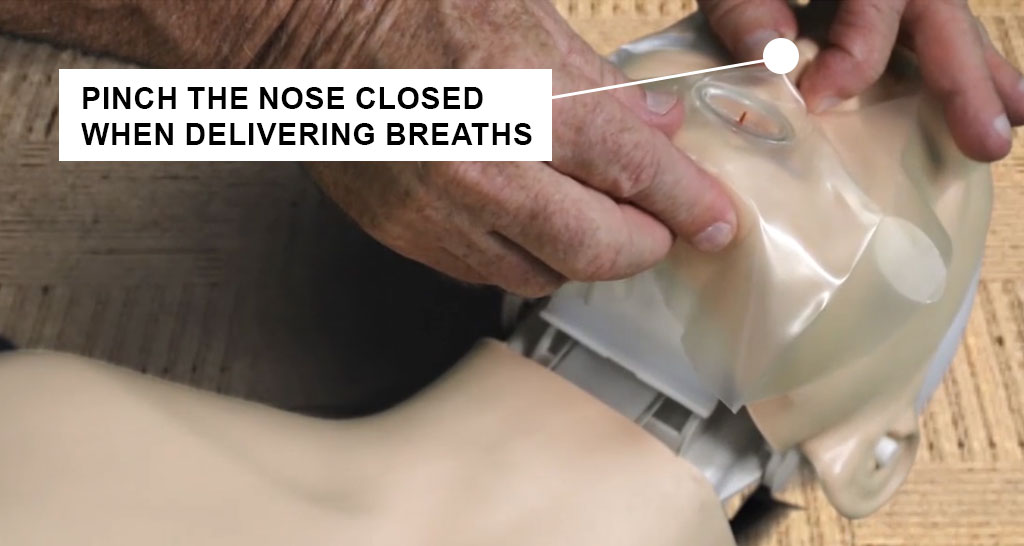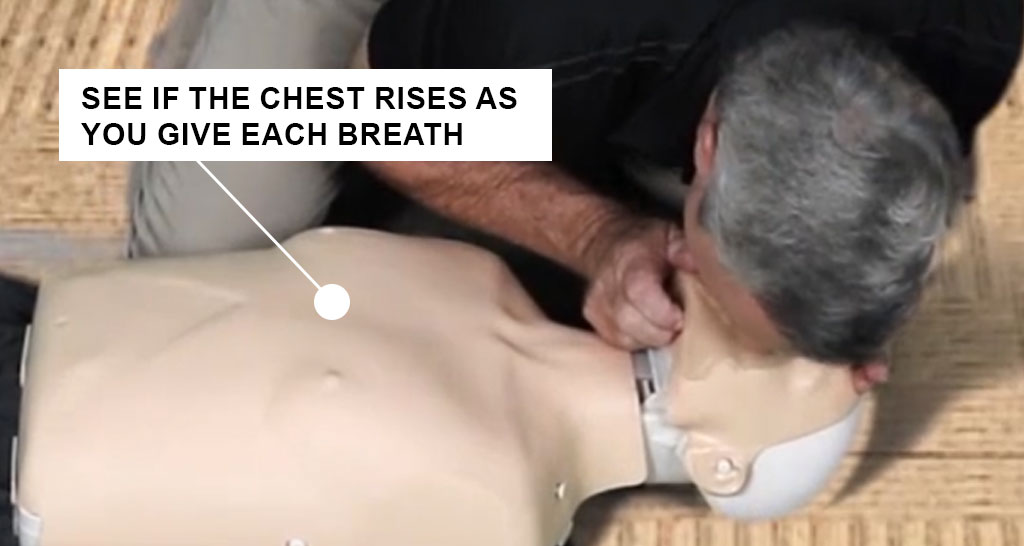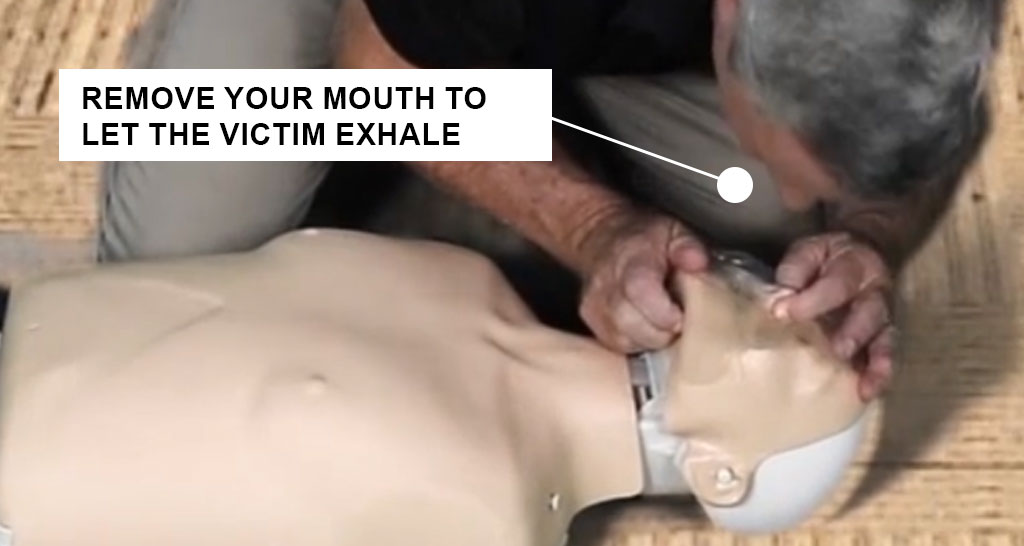How To Give Breaths Properly during CPR

Breathing for victims of cardiac arrest is still especially important. There are more causes of cardiac arrest than just heart attacks. Cardiac arrest can be the result of a choking victim, anaphylactic shock, drowning, drug overdose, and blunt force trauma are just some of the causes that can the victims’ heart to stop. And all those emergencies require breathing to minimize brain damage.
CPR with Breathing is needed for Adult, Child and Infant
Breaths should be delivered to any victim of an unwitnessed cardiac arrest and any child or infant who is not breathing regardless of the reason why. Brain damage and organ failure are the main reasons breathing is so important to a victim’s overall survival.
Opening the Airway
So, let’s cover the steps to giving breaths during CPR. Immediately after delivering your initial 30 chest compressions, you will perform a Head Tilt/Chin Lift maneuver to get the tongue out of the way so you will a clear path for your 2 breaths to reach the lungs. Place one hand on the forehead of the victim and your other hand under the victim’s chin. With your index finger and middle finger force the head backward. Now with your thumb of the other hand pull the victim’s chin downward to open the mouth.

At this point you will quickly inspect the mouth to make sure there is nothing in the way when you blow. You do not want to blow any food, gum, etc. into the throat and cause a blockage. If there is something in the mouth, use 2 fingers for an adult and 1 finger for a child to sweep the object out of the mouth. Do not perform a blind finger sweep. A blind finger sweep is when the rescuers looks in the mouth and does not see anything so they take their finger and reach deep into the mouth (behind the tongue) looking for something in the throat. Since they can’t see the object the end up pushing it deeper into the throat creating a more serious problem. The good news is with CPR (compressions) the object is usually forced up into the mouth where you can easily remove it. Another reason we start with compressions before breaths.
Delivering Breaths
Now that is done, you should place a mouth barrier in the mouth that has at least 1 one-way valve to protect you as you deliver your breaths. This one-way valve will keep body fluids on the victim’s side. With the head tilted back and the mouth open, you will pinch the victim’s nose (nostrils) closed and place your mouth over the victim’s mouth creating a tight seal while you blow for 1 second.

How hard should you blow in CPR?
Now while you are delivering your breath, look out of the corner of your eye at the victim’s chest to see if you got a rise. People always ask how hard to blow. Well, you do not want to blow too forcibly or you could force air into the stomach instead of the lungs. So, checking for chest rise while breathing is a great way to check your effectiveness.

CPR Troubleshoot: What if the chest is not rising when you blow air?
If you do not see the chest rise it could mean a couple of things:
- It could mean you did not create a tight seal over the victims’ mouth and your breath is going right out the sides of your mouth.
- You may have forgot to pinch the nose.
- You may just not be blowing hard enough.

Okay, so far you have delivered your first breath. You will then take your mouth off of the victim’s mouth for 1 second and allow the dirty air to come out. This is the exhaled breath. Then quickly while maintaining the head tilt/chin lift maneuver you will deliver your second breath, remembering all the steps above.
This a technique you can practice with a family member so you can get comfortable with the mechanics of this skill. Sign up for our free CPR training and share with your family and friends.
###
Can you catch a disease from performing CPR? Learn the facts and discover how to protect yourself while saving lives. Enroll in our Free Online CPR Training with Capt. Wayne Bennett today to be prepared and stay safe.
Learn the importance of AHA compliance in CPR training and how to choose the right program for your needs. Plus, discover our free online CPR training, perfect for school staff and parents. Read our blog post ” CPR Certification: Understanding AHA Compliance and Choosing the Right Program”



Comments are closed.